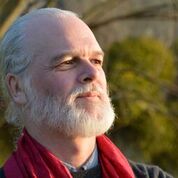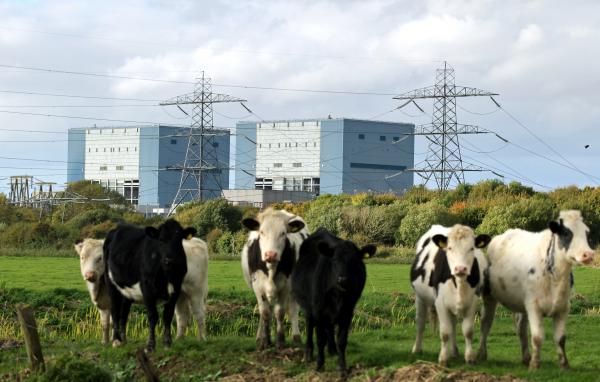原子力企業のメルトダウン
2016年04月14日
 マイケル・シュナイダー氏
Mycle Schneider(Photo by Serge Ollivier)
マイケル・シュナイダー氏
Mycle Schneider(Photo by Serge Ollivier)
あれから数カ月、世界最大規模の原子力企業たちは、株式市場でメルトダウンに直面している。混乱の中、ここ数十年で欧州最大の原子力投資プロジェクト、英国ヒンクリーポイントでの原発建設計画に決断が下されようとしている。240億ユーロ(2.96兆円)をかけてフランス製の原子力発電所が建設される予定だ。
株式市場が聞く耳を持たなかったのは、明らかだ。パリ会議の最終段階で、元米航空宇宙局(NASA)のジェームズ・ハンセン氏ら、気候変動を専門とする著名な科学者4人は「原子力発電は、現代的な暮らし全体に電力を供給することができ、化石燃料の燃焼によって生じる排気ガスに比べれば微々たる量の排気ガスしか出さない」と発表した。だが、この主張は露と消えた。
4人の科学者の熱烈な演説の翌日、世界最大の原子力発電事業者である仏電力公社(EDF)の株価は、それまでの最低に下落した。パリなどの証券取引所からなるユーロネクストは2015年12月7日の月曜日、フランスの主要株価指数CAC40から「パリの証券取引所の柱」であるEDFを除外した。その3日後、EDFの中央事業委員会で、労働組合の代表者らは、「この状況の深刻さ」を鑑みて、公式の「財務上の緊急時における手続き」を満場一致で初めて発表した。
フランスの原子力業界の重鎮EDFは、2016年に入ってさらに状況が悪化するとは思っていなかっただろう。だが、実際に状況は悪化した。
国営の放射性廃棄物処理会社である放射性廃棄物管理機関(ANDRA)から、高レベル放射性廃棄物の最終処理の費用情報が漏れた。地層処分施設の建設プロジェクトは、300億ユーロ前後と推定された。プロジェクト充当のための資金の約2倍だ。原子力の安全監視機関である仏原子力安全局(ASN)は、ANDRAの推定額は控えめでなく、仮説のいくつかは楽観的過ぎて、「慎重性の原則に反している」と見なした。言い換えれば、最終的な投入金額は、実際にはもっと高くなるかもしれないということだ。
エコロジー・持続可能開発・エネルギー相のセゴレーヌ・ロワイヤル氏は、最終的に、「CIGEO」と呼ばれるこの最終処分場のコストを、250億ユーロにするよう省令を出した。この数字は、他の推定額をはるかに下回り、まったく非現実的なので、定期的に更新されるはずだ。
だが、それでもこの金額はEDFの時価総額を超えており、2015年の同社の純利益では、5億ユーロのマイナスとなる。さらに、EDFのCEOは、2015年に法人顧客と商業顧客の3割を、同社よりも著しく低い金額を提示する競合他社に奪われたと認めている。EDFは、フランス国内だけでも3500人の従業員を削減して資産を売却する予定で、2018年までに100億ユーロの収益を得られるだろうと見込んでいる。
6カ月前に明らかになった不快な事実は、世界の原子力産業に詳しいアナリストにとって驚くことではなかった。投資銀行インベステックは2015年10月、EDFによる英ヒンクリーポイント原発建設プロジェクトへの関与は株主の配当金を危険にさらすかもしれないと懸念、顧客にEDF株を売却するよう助言していた。
 新規建設が承認された英国南西部にあるヒンクリーポイント原発=2013年10月。上田潤撮影
新規建設が承認された英国南西部にあるヒンクリーポイント原発=2013年10月。上田潤撮影EDFの持株従業員から成る連合(EAS)は「EDFがひどく脅かされる」だろうと述べ、このプロジェクトを「予言された財務破綻」と呼んだ。EASは経営側に対し、「経済的なリスクがあまりにも大きく、EDFの存続そのものを危くしうるこの危険なプロジェクトを、中止せよ」と求めた。株式市場の観測筋は、取締役会での混乱を見越していたようだ。事態はさらに大きくなっているようで、今年3月初めには、EDFの主席財務役員、トマス・ピクマル氏が辞任した。
EDFはナポレオンの敗北から200年後に、EDF版ワーテルローの戦いに直面しているのだろうか? ウクライナでのチェルノブイリ原発事故の大惨事から30年。期待された第3世代プラス原子炉と呼ばれる欧州加圧水型原子炉は、世界で1基も発電していない。
この間に「原子力のグローバルリーダー」を自認するフランス国有のアレバ社は、破産した。過去5年間の累積損失額は、年間最高売上高を上回る100億ユーロとなり、負債は60億ユーロに達した後、同社は解体されるだろう。
アレバ社は、信用格付けでは、すでに「投機的(ジャンク)等級」の領域に深く入っている。同社の株価は過去8年間で95%落ちた。下落は、東京電力(TEPCO)が福島第一原発での事故後、事実上の国有化を前に記録した落ち込みを超えている。2月19日には史上最低を更新した。
50億ユーロを注入し、アレバ社の原子炉事業をEDFに強制的に吸収させる、という政府の救済戦略は、今度はEDFのリスクを増大させている。欧州委員会は、この救済策を違反と見なすかもしれず、不確定要素だ。もう一つの大きな壁が、ヒンクリーポイントよりも前に開始されたフィンランドのオルキルオトとフランスのフラマンビルの原発建設プロジェクトが抱える数十億ユーロという債務である。
フィンランドのオルキルオト原発で欧州加圧水型原子炉の建設が始まったのは、10年以上前だ。この原発は、京都議定書の下でのフィンランドの温室効果ガス排出削減策として、2009年までにカーボンフリーの発電を開始する予定だった。現在、同発電所は「2018年後半」に電力を供給する予定となっている。
フランスのフラマンビル発電所は、さらにつまずいている。建設は2007年に開始され、完成は2012年に予定されていた。公式には、現在の完成目標はフィンランドのプロジェクトと同じ2018年後半になっている。建設が始まってからの推定コストは、当初の3倍以上の105億ユーロに膨れ上がっている。この数字には、中枢である原子炉圧力容器の重大な欠陥は含まれていない。この欠陥は、中国で建設中の欧州加圧水型原子炉2基にも打撃を与えており、プロジェクト全体を危機に陥らせる可能性がある。
フランスの安全管理当局が安全策を受け入れて決断を下すのは、早くても今年末になるだろう。EDFは、374億ユーロの負債のほか、老朽化が進む数々の原発の発電コストの急増、福島原発事故後の対応をはじめとするその他の多大な投資の必要性、過去4年連続での消費水準の低下にともなう顧客数の縮小に苦しんでいる。
前述の科学者4人は、2050年までに年115基が新たに稼働するという「実証的シナリオ」を掲げた。だが、世界の原発の老朽化に対応するには、改修があまりにも少なすぎる。原発の稼働年数は現在、平均で30年に近づいている。建設中の約60基は建設段階に入って平均で約8年が経った。少なくとも4分の3は建設が遅れており、4基は30年以上「建設中」のリストに入っている。
経済協力開発機構(OECD)の国際エネルギー機関(IEA)は、同機関の「新政策シナリオ」で、今後25年間に原子力の発電容量の純増加を222ギガワットと予測している。現実に過去25年間で増加した原発は、この10分の1のの22ギガワットにすぎない。予測が希望的観測であることは明白だ。
かたや、自然エネルギー部門は活況で、2015年には世界の投資水準が4%上昇し、推定で3290億ドルと新記録の水準に達した。化石燃料価格が下落し、自然エネルギーのコストも低下しているだけに、なおさら驚くべき数字だ。風力と太陽光の発電設備容量は30%上昇して、風力が64ギガワット、太陽光が57ギガワット増えた。原発の設備容量の純増加分6.7ギガワットの16倍で、かなりの桁違いだ。
設備容量1ギガワット当たりの発電量が、原発に比べて3~8倍少ないとはいえ、自然エネルギーによる発電量は、原子力よりもはるかに速く成長している。世界の4大経済大国中3カ国(中国、ドイツ、日本)を含む少なくとも8カ国では、すでに原子力よりも自然エネルギーの発電量が多くなっている。昼光照明やパッシブデザインの住宅といったアクティブシステムに頼らないエネルギーサービス、最終消費地におけるエネルギー効率と発電効率、そして自然エネルギーなど、原発以外の選択肢は、極めて安くなっているだけでなく、実施もずっと迅速になっている。
原発などの旧来の電力モデルは、困難に陥っている。電力会社はキロワット時で売る電力以外の何かを売ることを学ぶ必要がある。さもないと、進行中のエネルギー革命を生き延びることはできないだろう。
原子炉製造に関わる産業は、安全な逃げ場、すなわち廃炉へ救いを求めたいと思っているかもしれない。あるビジネストレンド紙は最近、「原子炉解体は、ウェスチングハウスの未来ではないのか?」と問いかけた。東芝の子会社であるウェスチングハウスは、東芝が現在抱えている問題の多くの要因となっているが、原子炉の製造はあまりにも高額で、時間がかかりすぎることが明らかになったと認める必要に迫られている。
実際、東芝の代表執行役上席常務の平田政善氏は、2015年11月にアナリストに対し「廃炉の需要が世界的に増えるだろうと思っている」と述べていた。これを受けて、JPモルガン証券は「変化に向けた第一歩」と題した調査報告書を発表した。
After the Paris-Agreement: Corporate Meltdown in the Nuclear Industry
Mycle Schneider
The international nuclear industry had great hopes in the 21st Conference of the Parties to the United Nations Framework Convention on Climate Change. The COP21 labelled Paris event in December 2015 was thought to boost the profile as low-carbon technology of an industry in great difficulty. It did not happen. Only a few months later, some of the largest nuclear companies in the world are facing a meltdown on the stock market. In the middle of the turmoil, a decision is to be taken on the largest nuclear investment project in decades in Europe, a €24 billion French plant for Hinkley Point in the United Kingdom.Clearly, the stock market did not get the message. The claim of four climate mousquetaires, released during the final stretch of the Paris climate talks, that “nuclear energy can power whole civilisations, and produce waste streams that are trivial compared to the waste produced by fossil fuel combustion”, dissipated in space. One day after that enthusiastic statement by the illustrious quartet of climate experts, including former NASA scientist James Hansen, the share value of the largest nuclear operator in the world, the French state-controlled Électricité de France (EDF), dropped to its (then) historic low.
On Monday, December 7, 2015, Euronext ejected EDF, “pillar of the Paris Stock Exchange”, from France’s key stock market index, known as CAC40. Three days later, the trade union representatives at the Central Enterprise Committee of EDF—unanimously and for the first time—launched an official “economic alert procedure” considering the “seriousness of the situation”. Getting into the New Year, it was hard to imagine that things could get any worse for the French nuclear jewel EDF. They did get worse. Information leaked that the national nuclear waste company ANDRA estimated the cost of the projected geological final disposal facility for high-level radioactive waste would be around €30 billion, roughly twice as high as the baseline for the funds put aside for the financing of the project. Nuclear Safety Authority ASN considers that the ANDRA estimate is by no means conservative, that certain hypotheses are “too optimistic” and therefore “not in conformity with the imperative of prudence”. In other words, the final bill might actually be a lot higher.Ecology, Sustainable Development and Energy Minister Ségolène Royal finally issued a Ministerial Order “setting” the cost of the final waste disposal site, called CIGEO, at €25 billion. The number remains entirely hypothetical and is supposed to be updated regularly. While remaining far below other estimates, the new figure exceeds EDF’s market capitalization and costs the company half a billion euros in net income in 2015. In addition, EDF’s CEO admitted that in 2015 the company lost 30% of their industrial and commercial clients to their competitors offering significantly lower prices. EDF plans to reduce its workforce by 3,500 in France alone and sell assets hoping to generate €10 billion in revenue until 2018.
Things turning sour six months ago came as no surprise to analysts familiar with the international nuclear industry. In October 2015, investment bank Investec advised clients to sell EDF shares amid fears that its connection with the nuclear plant project at Hinkley Point in the UK could put payouts to shareholders under threat. One month later, the French and British governments announced the signature of a framework agreement on a financing package including Chinese partners for the construction of two French-built European Pressurized water Reactors (EPR) at Hinkley Point. Credit-rating agency Moody’s warned that the launch of the project “will have a credit-negative effect on the companies”. The federation of EDF employee-shareholders EAS said in a statement that the interests of their company would be “gravely threatened” by the Hinkley Point project, calling it "a financial catastrophe foretold.” EAS asked the management of EDF “to stop this risky project, whose financial risks are too big for our company and which could put EDF's very survival at risk.” Stock market observers wondered whether there’s “panic on board?”. It increasingly looked like it as EDF's Chief Financial Officer Thomas Piquemal resigned in early March 2016.Is EDF facing its Waterloo 200 years after Napoleon’s defeat?
Launched as a response to the Chernobyl accident, at the brink of the 30th anniversary of the disaster in Ukraine, not a single so-called Generation-III+ EPR reactor is generating power anywhere in the world.
In the meantime, the self-proclaimed “global leader in nuclear energy,” the French state-controlled AREVA, went bankrupt. After a cumulate loss of €10 billion ($11.4 billion) over the past five years, significantly exceeding its peak annual turnover, and a debt load of €6 billion ($6.8 billion), the company will be taken apart. AREVA is already deep in “junk” territory, when it comes to its credit-rating. Its share value has eroded by 95 percent over the past eight years—a plunge exceeding TEPCO’s fall after the Fukushima crisis hit the company and prior to its de-facto nationalization—hitting a new historic low on February 19, 2016. The government’s rescue strategy—injecting €5 billion and forcing EDF to absorb AREVA’s reactor business—is in-turn increasing the risk for EDF. Uncertainty remains whether the European Commission will not consider illegal state aid the generous subsidy under EU competition rules. Another significant barrier for the conclusion of the rescue deal remains the multibillion-euro liability of the Hinkley Point predecessor projects in Olkiluoto, Finland, and Flamanville, France. The EPR construction in Finland started over ten years ago. The plant was to begin generating carbon-free electricity by 2009 and was part of the country’s greenhouse gas abatement strategy under the Kyoto Protocol. Now, the plant is scheduled to produce power in “late 2018.”
The sister plant in France is not doing any better—on the contrary. Construction started in 2007 with completion planned for 2012. Officially, the target date currently is the same as for the Finnish project. The investment-cost estimate since construction start, exploded by more than a factor of three to €10.5 billion ($12 billion). This is not counting in a serious material flaw in the machine’s center piece, the reactor pressure vessel. The fabrication defect that also hits the two EPRs under construction in China, could jeopardize the entire projects. It will take at least until the end of the year until the French safety authorities make up their mind whether they consider the safty levels acceptable. In addition, EDF struggles with a €37.4 billion ($42.6 billion) debt burden, rapidly increasing production costs in its aging nuclear fleet, significant post-Fukushima and other investment needs, and a shrinking client base with stagnating or declining consumption levels over the past five years in a row.
The international outlook is not any rosier. There have been 40 reactors connected to the world’s power grids in ten years after an average construction time of close to 10 years. Compare this with the four climate heros’ “illustrative scenario” of 115 startups per year to 2050. Too little renewal to avoid the continuous aging of the world nuclear fleet whose average age is now standing at around 30 years. Some 60 units under construction have been in the building stage for an average of around eight years; at least three-quarters are delayed, four have been listed as “under construction” for over 30 years. The Organisation for Economic Co-operation and Development’s International Energy Agency projects in its “New Policy Scenario” a net addition of 222 nuclear gigawatts (GW) over the coming 25 years. This compares with the net nuclear addition of 22 GW over the past 25 years—another illustration of the level of wishful thinking in current international projections.
On the other side, the renewable energy sector is booming and the worldwide investment levels increased by 4% to reach a new record level in 2015 with an estimated $329 billion. The numbers are all the more remarkable as fossil fuel prices were low and renewable energy system costs continued to fall, leading to a 30% increase of installed capacity in wind (+64 GW) and solar (+57 GW), sixteen times the quite exceptional net nuclear addition (+6.7 GW). Even with three to eight times lower power generation per installed GW, renewable electricity production is growing much faster than nuclear. At least eight countries, one quarter of the nuclear nations, including three of the four largest economies in the world (China, Germany, Japan) are already generating more power from renewables than from nuclear.
You can spend a euro, a dollar or a yen only once. The investment in new nuclear reactors leads de facto to an increase in greenhouse gas emissions as other options—notably intelligent energy services (like daylighting or entire passive house designs) that don’t depend on active systems, end-use and production efficiency, and now renewables—are not only considerably cheaper, they are much faster to implement.
The traditional utility model, nuclear or not, is in deep trouble. Power companies need to learn to sell something other than kilowatt-hours or they will not survive the ongoing energy revolution. And the reactor-building industry might want to turn to a safe haven: decommissioning. A Business trade journal recently wondered: “Is dismantling reactors the future of Westinghouse?” The Toshiba subsidiary, source of much of the current troubles of the industrial giant, might need to acknowledge that building these machines turned out to be too expensive and too slow. Indeed, Masayoshi Hirata, Toshiba’s senior Vice-President, told analysts in November 2015: “We believe there will be a more global demand for the nuclear decommissioning”. JP Morgan Securities Japan responded by issuing a research note entitled “First Step Toward Change”.
Mycle Schneider is an Independent International Analyst on Energy and Nuclear Policy, based in Paris, France. He is Convening Lead Author and Publisher of the World Nuclear Industry Status Report. He is a Member of the Princeton University-based International Panel on Fissile Materials (IPFM) and Spokesperson of the International Energy Advisory Council (IEAC). Photo by Serge Ollivier.
有料会員の方はログインページに進み、デジタル版のIDとパスワードでログインしてください
一部の記事は有料会員以外の方もログインせずに全文を閲覧できます。
ご利用方法はアーカイブトップでご確認ください
朝日新聞社の言論サイトRe:Ron(リロン)もご覧ください